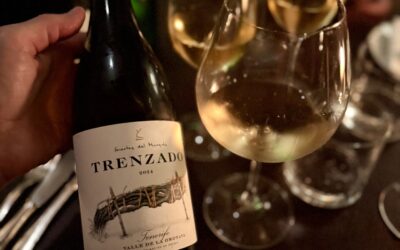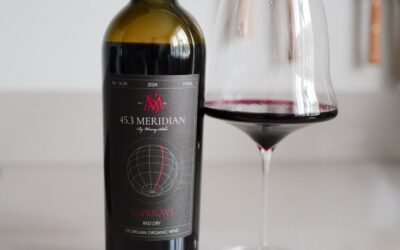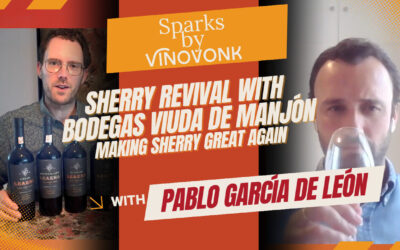Let’s clear something up right away: Cul Sec Rouge en Voiture isn’t trying to be wine. If you want wine, drink wine. What Dutch producers Fruitslagers have created is something more interesting—a wine proxy that borrows techniques from viticulture and winemaking but refuses to play the imitation game. When I first opened this bottle and poured it into my glass, I stopped looking for Pinot Noir and started appreciating what was actually there. The friends of Grote Hamersma apparently agree, awarding it an impressive 9.5 rating.
What Is a Wine Proxy, Anyway?
Rouge en Voiture is part of Cul Sec’s 2025 cuvée—four distinctive beverages (all under 0.5% ABV) that exist in conversation with wine rather than trying to replicate it. Think of it this way: kombucha utilizes fermentation but doesn’t claim to be beer. Cul Sec utilizes wine grapes, terroir-driven thinking, oak aging, and fermentation techniques, yet creates something categorically distinct.
The philosophy behind Domaine Cul Sec centers on “building an estate full of wilderness and regeneration.” They forage flavors from their landscape—oyster shells for minerality, various woods for tannins, lacto-fermented fruits for funky depth. It’s winemaking’s toolbox applied to a completely different project. The name Rouge en Voiture—literally “Red on the Go”—captures its essence: something profound yet unpretentious, complex yet not precious.
Borrowed Techniques, Original Vision
Here’s where it gets interesting. Fruitslagers spent an entire year working with European farmers to source organic Pinot Noir and Kékfrankos grapes from Nemesgulács, Hungary, plus Dornfelder from Kitzingen, Germany. But instead of fermenting these into wine, they use a combination of ripe oxidized grapes and tart verjus (unripe grape juice) to build a base rich in acidity and tannins—the structural elements that make wine compelling, without the alcohol.
The real alchemy happens through lacto fermentation—the same bacterial process behind kimchi and sauerkraut. Rhubarb and red currant undergo this transformation, developing complex, funky flavors without the need for added sugar. The liquid ages on oak with kombucha cultures, then gets infused with blackcurrant leaf using hydrosonic extraction, an ultrasound technique that pulls intense flavor in minutes rather than weeks. Kelp seaweed adds mineral depth. It’s terroir thinking applied to wild fermentation—using place and process to create character, not trying to make grape juice taste like Burgundy.
My Tasting Notes: Remarkably Structured
When I poured Rouge en Voiture into my glass, the first thing that struck me was the color. Wow. It’s intense—an intense, almost impenetrable garnet with subtle effervescence. This is significantly darker than the 2024 version I tasted last year with Fleur from Fruitslagers.
The nose literally jumps out of the glass. Highly aromatic layers unfold, with beets and dark cherries forming the foundation, while chestnuts and hazelnuts add a nutty depth. Fresh herbs—such as basil, oregano, and stinging nettle—create an almost savory complexity. There’s earthy undergrowth and bramble leaf. It’s exceptionally fruity, but in a wild, foraged way rather than the commercial sweetness of fruit juice. Suppose you’re expecting conventional wine aromas, you may be disappointed. If you’re open to something genuinely different, you’ll be captivated.
On the palate, I was impressed by the genuine structure. Real tannins create a grippy mouthfeel—yes, actual tannins in a non-alcoholic beverage. The acidity is bright and mouth-watering. Those beet notes return, adding earthiness reminiscent of forest floor. There’s a pleasant bitterness on the finish that adds sophistication, characterized by high complexity, a wealth of flavors, abundant fruit, and a multitude of herbs. The gentle sparkle provides lift without being aggressively carbonated. When served slightly less cold than fridge temperature, the aromatics really open up beautifully.
When and How to Drink It
Here’s the truth about that common question: no, you won’t get hungover from this. Even if you drink the entire 750ml bottle, you won’t be “brak” the next morning. At less than 0.5% alcohol, it’s functionally zero.
This works best when you’re not trying to replace wine. It shines at lunch when you want something serious but need to stay sharp for the afternoon. It’s perfect for anyone avoiding alcohol who misses having something sophisticated.
For food pairing, I immediately thought of autumn dishes: a beautiful wild mushroom risotto finished with shaved fresh truffle would be perfect. The earthy, umami-rich flavors perfectly mirror the beverage’s character, reminiscent of a forest floor. It also pairs well with roasted root vegetables, aged cheeses, and dark chocolate.
But don’t serve this when someone asks for “something like a nice Chianti.” That’s setting everyone up for disappointment. This doesn’t resemble wine at all—and that’s intentional. Serve it when someone’s curious about fermentation or wants something with real character. Once opened, consume within five days, as the freshness will fade.
The Honest Assessment: A Serious New Product
Rouge en Voiture succeeds brilliantly at what it aims to do—create a complex, terroir-driven fermented beverage using wine techniques without the addition of alcohol. This is a genuinely serious drink, not a soft drink pretending to be something else. It’s simply something new. A proxy. And a beautiful one at that.
The critical limitations are real, though. Availability is severely restricted—production is small-scale and distribution remains primarily through Roze Bunker in the Netherlands. Even if you’re intrigued, actually obtaining a bottle can be challenging, unless you’re in the Benelux region. At under €18 per 750ml bottle, the pricing is fair for the craftsmanship, but it’s not supermarket beverage pricing either.
Additionally, the funky, earthy, intentionally bold character won’t appeal to conventional drinkers. This is for natural wine enthusiasts, fermentation nerds, the genuinely sober-curious, and anyone who appreciates beverages with strong points of view. It’s emphatically not for people who want something familiar or broadly crowd-pleasing.
A Proxy Worth Seeking Out
What Fruitslagers has achieved with Rouge en Voiture is significant: they’ve created a wine proxy that stands on its own merits. This is genuinely a new category—something serious, complex, and worthy of attention. It’s not just a good alcohol-free alternative to natural wine; it’s a superb alcohol-free alternative period.
My recommendation? Get this. If you’re curious about what happens when you apply wine philosophy to create something entirely new, absolutely seek it out. If you want a bottle that tastes like last summer’s Côtes du Rhône, look elsewhere. Rouge en Voiture isn’t trying to replace anything. It’s offering something compelling in its own right. Santé!










